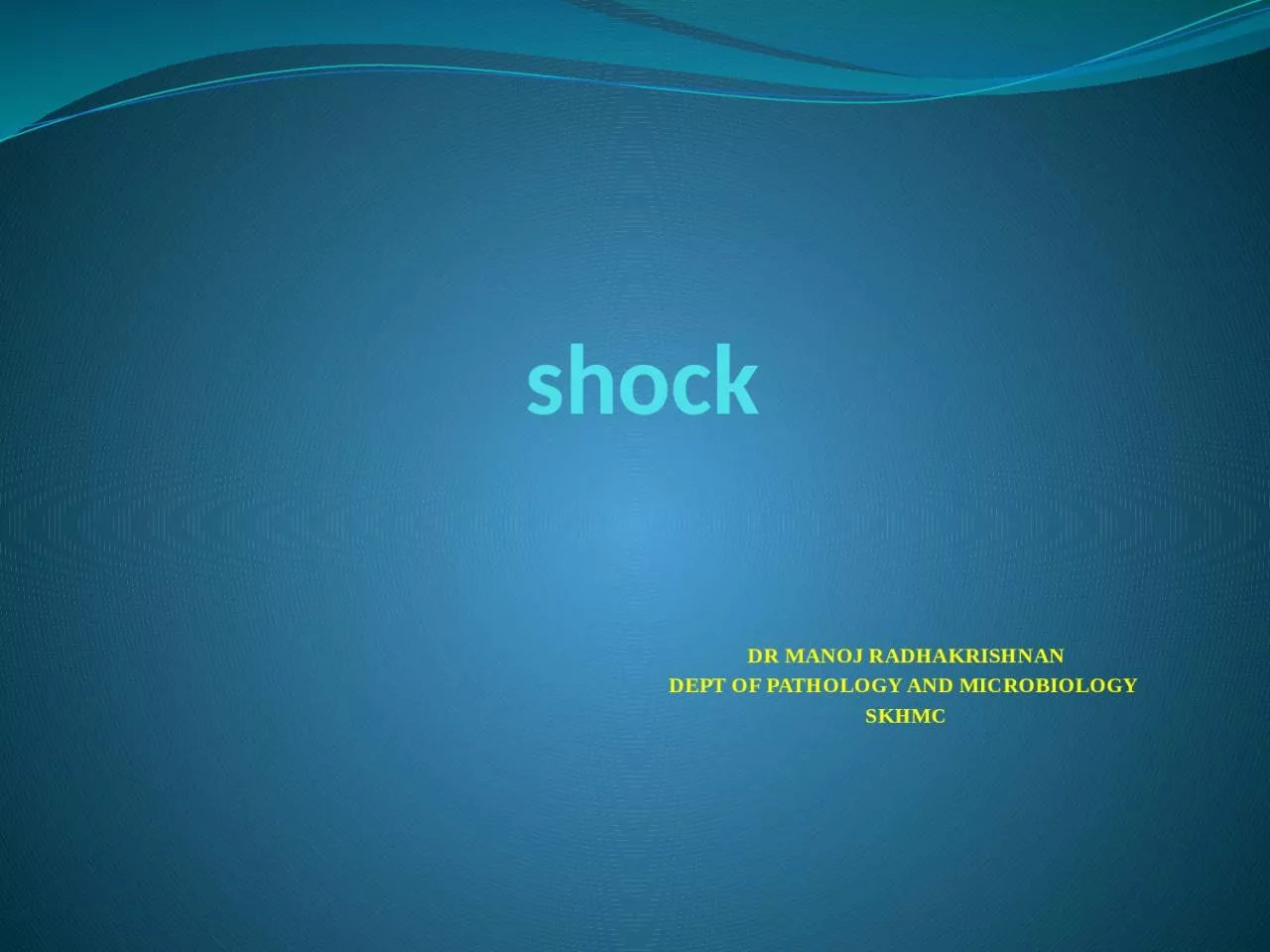

DEPT OF PATHOLOGY AND MICROBIOLOGY SKHMC what is shock Is a final common pathway for a number of serious or potentially lethal clinical events e g severe hemorrhage Extensive trauma or burns ID: 1000629
Download Presentation The PPT/PDF document "shock DR MANOJ RADHAKRISHNAN" is the property of its rightful owner. Permission is granted to download and print the materials on this web site for personal, non-commercial use only, and to display it on your personal computer provided you do not modify the materials and that you retain all copyright notices contained in the materials. By downloading content from our website, you accept the terms of this agreement.
1. shockDR MANOJ RADHAKRISHNANDEPT OF PATHOLOGY AND MICROBIOLOGY SKHMC
2. what is shock ?Is a final common pathway for a number of serious or potentially lethal clinical events- e g severe hemorrhage,Extensive trauma or burns large myocardial infarctionMassive pulmonary embolismMicrobial sepsis
3. Definition of shockSystemic hypoperfusion caused either by reduced cardiac output, or by reduced effective circulatory blood volume.End results are,HypotensionImpaired tissue perfusionCellular hypoxia
4. 3 categories of shockCardiogenic shock: results from failure of the cardiac pump.due to myocardial damage(infarction), ventricular arrythmias, extrinsic compression(cardiac tamponade), or outflow obstruction.(pulmonary embolism)Hypovolemic shock: results from loss of blood or plasma volume. This maybe caused by hemorrhage , fluid loss from severe burns, or traumaSeptic shock: most commonly occurs in gram negative infections(endotoxic shock), due to host responses.
5. Cardiogenic shockCauses : Myocardial Infarction, Ventricular rupture, Arrhythmia, cardiac tamponade, pulmonary embolism.Principal mechanism : Failure of myocardial pump, resulting from intrinsic myocardial damageExtrinsic pressureObstruction to outflow
6. Cardiogenic shock-mechanisms
7. Patho-physiology of cardiogenic shock
8. Hypovolemic shockCauses : hemorrhage, fluid loss ( vomiting , diarrhoea, burns, or trauma)Principal mechanism : Inadequate blood or plasma volume.
9. Hypovolemic shock-mechanisms
10.
11. Septic shockCauses: overwhelming microbial infections, endotoxic shock, gram positive septicemia, fungal sepsis, superantigens(e.g toxic shock syndrome)Principal mechanism :Peripheral vasodilatation and pooling of blood ; endothelial activation/ Injury; leucocyte –induced damage; disseminated intravascular caugulation; activation of cytokine cascades.
12.
13.
14. Shock lung or ARDS –Lung ,fluffy, cottony opacities-CXR
15.
16. A.R.D.S Lung
17. Shock Kidney
18.